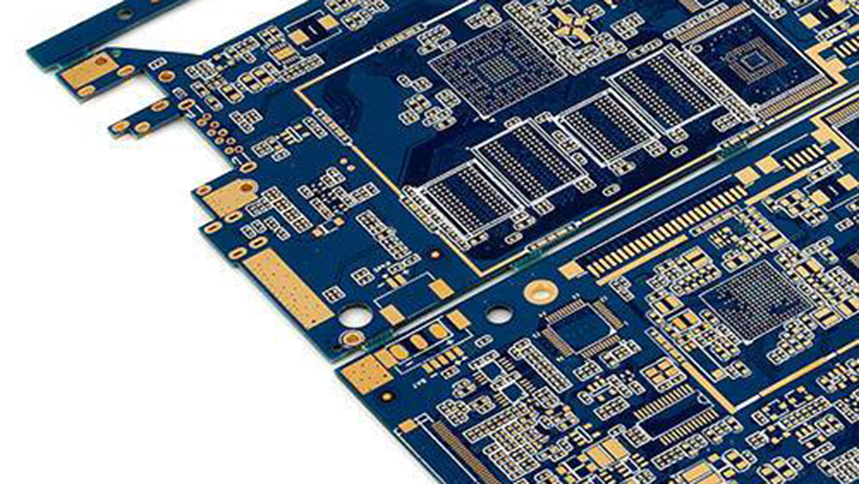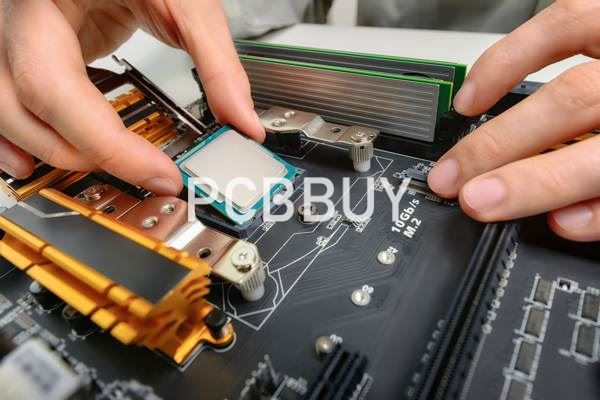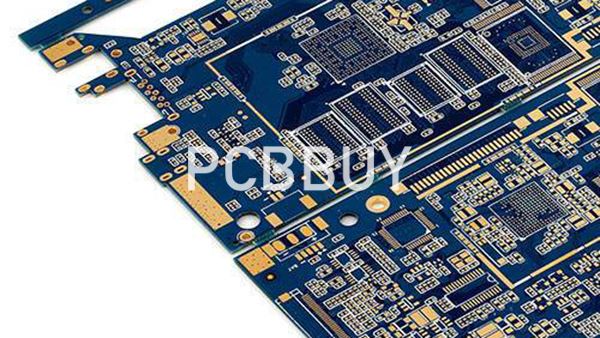7 Advantages of ENIG PCB Finish to Guarantee the Quality
By:PCBBUY 09/15/2021 10:06

The ENIG is a common acronym that stands for Electroless Nickel Immersion Gold. As the hot air solder leveling, it is also a surface finish of the printed circuit board industry. The ENIG got its name because it comprises electroless nickel plating, which is coated with a slim layer of immersion gold. Continuously, it has secured market share resulting from its ability to be flexible in various component assembly processes.
In this article, we will tell you all the advantages of ENIG of the PCB manufacturing process. If you are going to learn the professional knowledge of ENIG, please check and read the content we prepare for more information.

What is the process of ENIG in PCB manufacturing?
ENIG process or PCB immersion gold is one of the most straightforward means to undertake. In this process, the vias and surfaces that are intended for the final finish/production first have a nickel layer that’s applied to the copper through an electroless process as a means of creating a diffusion barrier. In the second step, there’s the application of a fragile gold finish. The gold prevents nickel from oxidation while significantly determining the solderability of the surface.
When should I use ENIG technology?
There are plenty of reasons why you may need to use ENIG technology over other forms of surface finish technology that you may have at your disposal. For instance, if you want to use ENIG technology, you will have printed circuit boards that have a long shelf life. Additionally, if you are going to have hassle-free solderability, you may find it necessary to use ENIG technology instead of other forms of technology available for you.
ENIG technology also comes with the promise of less oxidation, low contact resistance, high strength, and antifriction. With ENIG technology, the printed circuit board’s surface becomes easy to treat, not forgetting that this technology provides excellent plating around the holes in the PCB.
What are the main 7 advantages of ENIG in PCB manufacturing?
1. Flat Surface
The ability to perfectly fit into flat surfaces is another advantage associated with ENIG. ENIG plating is lately turning out and becoming a popular surface finish preferred by many PCB manufacturers. ENIG consists of a double layer metallic coating consisting of nickel that acts both as a surface and a barrier to which designers can solder the components.
2. Easy to soldering
Based on different crystal structure those get formed by both Gold plating and ENIG. Additionally, welding ENIG does not bring about welding defects based on the fact that ENIG is a bit softer than Gold plating. It is easy to control the stress in immersion gold as opposed to Gold plating.
3. Widely applications
Unlike other types of solutions that may fail to function as desired across several electronic products, something good about ENIG PCB is that it can perfectly fit across various electronic products with much ease.

Last but not least, another notable advantage associated with ENIG (Electroless Nickel Immersion Gold) surface coating is that it finds much use in a variety of electronic products from computer motherboards to wearables, and medical appliances, among others.
4. Non-require electroplating
ENIG is best known for being corrosion-resistant, and a common type of plating commonly used when it comes to the manufacture of printed circuit boards. As mentioned earlier, ENIG consists of a gold layer on top of a nickel layer.
5. Lead-free
Another significant advantage associated with immersion gold or ENIG is that it is lead-free, meaning that manufacturers are not exposed to harmful chemicals when using it as a surface finish on PCBs. Since regular exposure to high lead levels may bring about several complications such as brain and kidney damage and body weakness.
6. Long guarantee period
The reason is that such finishes come with the promise of a long shelf life that lasts up to 12 months or more. The type of finish used in the manufacture of a printed circuit board determines the shelf life of aboard in months. Depending on the type of finish used, a printed circuit board will last 6, 12, or even more than a year. Unlike other surface finishes used in the manufacture of printed circuit boards, most printed circuit board manufacturers mainly prefer to use ENIG PCB finishes.
7. Good oxidation resistance
ENIG surface plating consists of electroless nickel plating covered with thin layers of immersion gold that protect the nickel from any oxidation. Experienced and high-quality printed circuit board manufacturers in the market for PCB surface finishes always look for surface finishes resistant to oxidation. Another significant advantage associated with ENIG surface finish is that such a finish offers excellent oxidation resistance, unlike other surface finishes.
Industry Category











